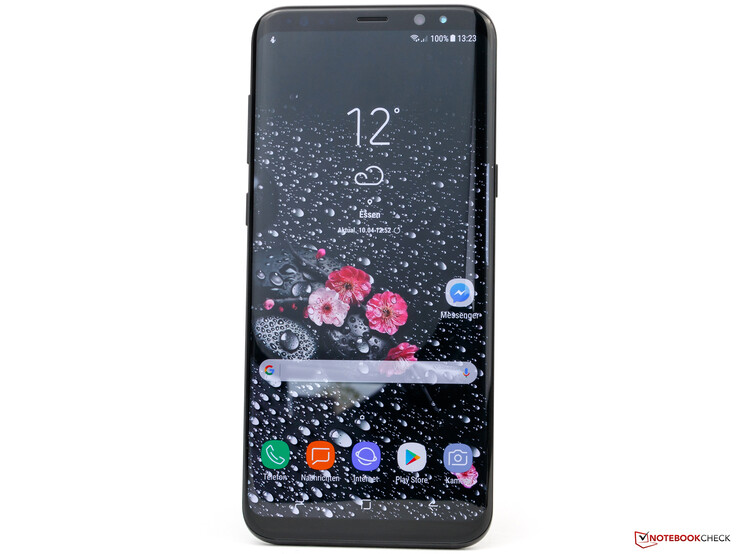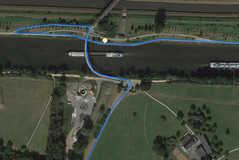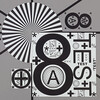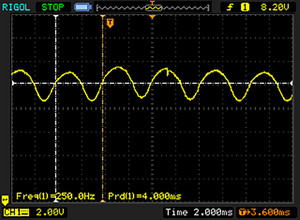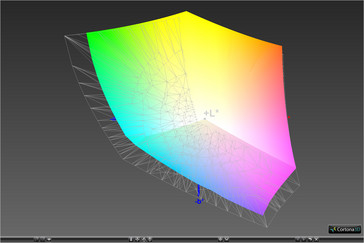Test: Samsung Galaxy S8+ (Plus, SM-G955F) (sammanfattning)
Topp 10...
» Topp 10: Bästa bärbara allround/multimediadatorerna
» Topp 10: Bästa bärbara speldatorerna
» Topp 10: Bärbara budget/kontorsdatorer
» Topp 10: Bästa bärbara kontors/premiumdatorerna
» Topp 10: Bärbara arbetsstationer
» Topp 10: De bästa små/kompakta bärbara datorerna
» Topp 10: Bästa ultrabooks
» Topp 10: Bästa hybriddatorerna
» Topp 10: Bästa surfplattorna
» Topp 10: Marknadens bästa smartphones
Size Comparison
| Networking | |
| iperf3 transmit AX12 | |
| Samsung Galaxy S8 Plus | |
| Apple iPhone 7 (Klaus I211) | |
| Google Pixel XL 2016 | |
| Samsung Galaxy S7 Edge | |
| LG G6 | |
| Huawei Mate 9 | |
| iperf3 receive AX12 | |
| Apple iPhone 7 (Klaus I211) | |
| Google Pixel XL 2016 | |
| Samsung Galaxy S8 Plus | |
| LG G6 | |
| Samsung Galaxy S7 Edge | |
| Huawei Mate 9 | |
| |||||||||||||||||||||||||
Distribution av ljusstyrkan: 93 %
Mitt på batteriet: 560 cd/m²
Kontrast: ∞:1 (Svärta: 0 cd/m²)
ΔE ColorChecker Calman: 1.7 | ∀{0.5-29.43 Ø4.78}
ΔE Greyscale Calman: 1.6 | ∀{0.09-98 Ø5}
99.87% sRGB (Argyll 1.6.3 3D)
81.57% AdobeRGB 1998 (Argyll 1.6.3 3D)
92.3% AdobeRGB 1998 (Argyll 3D)
99.3% sRGB (Argyll 3D)
83.2% Display P3 (Argyll 3D)
Gamma: 2.13
CCT: 6435 K
| Samsung Galaxy S8 Plus Super AMOLED, 2960x1440, 6.2" | Samsung Galaxy S7 Edge Super AMOLED, 2560x1440, 5.5" | Huawei Mate 9 IPS, 1920x1080, 5.9" | Apple iPhone 7 Plus IPS, 1920x1080, 5.5" | Google Pixel XL 2016 AMOLED, 2560x1440, 5.5" | Lenovo Moto Z AMOLED, 2560x1440, 5.5" | HTC U Ultra SLCD 5, 2560x1440, 5.7" | |
|---|---|---|---|---|---|---|---|
| Screen | 1% | -81% | 3% | -83% | -21% | -149% | |
| Brightness middle (cd/m²) | 560 | 554 -1% | 696 24% | 557 -1% | 402 -28% | 485 -13% | 470 -16% |
| Brightness (cd/m²) | 562 | 552 -2% | 680 21% | 553 -2% | 408 -27% | 490 -13% | 445 -21% |
| Brightness Distribution (%) | 93 | 96 3% | 93 0% | 97 4% | 85 -9% | 92 -1% | 88 -5% |
| Black Level * (cd/m²) | 0.42 | 0.35 | 0.22 | ||||
| Colorchecker dE 2000 * | 1.7 | 1.59 6% | 4.3 -153% | 1.4 18% | 4 -135% | 2.1 -24% | 5.5 -224% |
| Colorchecker dE 2000 max. * | 3.4 | 2.56 25% | 9.4 -176% | 3.1 9% | 10.1 -197% | 5.5 -62% | 11.9 -250% |
| Greyscale dE 2000 * | 1.6 | 2.01 -26% | 4.8 -200% | 1.3 19% | 3.2 -100% | 2.6 -63% | 7.6 -375% |
| Gamma | 2.13 103% | 2.01 109% | 2.33 94% | 2.21 100% | 2.19 100% | 2.23 99% | 2.2 100% |
| CCT | 6435 101% | 6321 103% | 7255 90% | 6667 97% | 7037 92% | 6843 95% | 7454 87% |
| Color Space (Percent of AdobeRGB 1998) (%) | 81.57 | 82.12 1% | 63.1 -23% | 88.14 8% | |||
| Color Space (Percent of sRGB) (%) | 99.87 | 99.98 0% | 99.83 0% | 100 0% | |||
| Contrast (:1) | 1657 | 1591 | 2136 |
* ... mindre är bättre
Skärmflimmer / PWM (Puls-Width Modulation)
| Skärmflimmer / PWM upptäckt | 250 Hz | ||
Displayens bakgrundsbelysning flimrar vid 250 Hz (i värsta fall, t.ex. med PWM) . Frekvensen för 250 Hz är relativt låg, så känsliga användare kommer sannolikt att märka flimmer och uppleva ansträngda ögon vid den angivna ljusstyrkeinställningen och nedan. Som jämförelse: 53 % av alla testade enheter använder inte PWM för att dämpa skärmen. Om PWM upptäcktes mättes ett medelvärde av 8111 (minst: 5 - maximum: 343500) Hz. | |||
Visa svarstider
| ↔ Svarstid svart till vitt | ||
|---|---|---|
| 3.2 ms ... stiga ↗ och falla ↘ kombinerat | ↗ 2 ms stiga | |
| ↘ 1.2 ms hösten | ||
| Skärmen visar väldigt snabba svarsfrekvenser i våra tester och borde vara mycket väl lämpad för fartfyllt spel. I jämförelse sträcker sig alla testade enheter från 0.1 (minst) till 240 (maximalt) ms. » 13 % av alla enheter är bättre. Det betyder att den uppmätta svarstiden är bättre än genomsnittet av alla testade enheter (20.2 ms). | ||
| ↔ Svarstid 50 % grått till 80 % grått | ||
| 5.6 ms ... stiga ↗ och falla ↘ kombinerat | ↗ 2.8 ms stiga | |
| ↘ 2.8 ms hösten | ||
| Skärmen visar väldigt snabba svarsfrekvenser i våra tester och borde vara mycket väl lämpad för fartfyllt spel. I jämförelse sträcker sig alla testade enheter från 0.165 (minst) till 636 (maximalt) ms. » 17 % av alla enheter är bättre. Det betyder att den uppmätta svarstiden är bättre än genomsnittet av alla testade enheter (31.6 ms). | ||
| AnTuTu v6 - Total Score (sortera efter värde) | |
| Samsung Galaxy S8 Plus | |
| Samsung Galaxy S7 Edge | |
| Sony Xperia XZ | |
| HTC U Ultra | |
| LG G6 | |
| Google Pixel XL 2016 | |
| Lenovo Moto Z | |
| Huawei Mate 9 | |
| Apple iPhone 7 Plus | |
| Geekbench 4.4 | |
| 64 Bit Single-Core Score (sortera efter värde) | |
| Samsung Galaxy S8 Plus | |
| LG G6 | |
| Huawei Mate 9 | |
| 64 Bit Multi-Core Score (sortera efter värde) | |
| Samsung Galaxy S8 Plus | |
| LG G6 | |
| Huawei Mate 9 | |
| Basemark ES 3.1 / Metal - offscreen Overall Score (sortera efter värde) | |
| Samsung Galaxy S8 Plus | |
| Samsung Galaxy S7 Edge | |
| LG G6 | |
| Google Pixel XL 2016 | |
| Lenovo Moto Z | |
| Huawei Mate 9 | |
| Apple iPhone 7 Plus | |
| GFXBench 3.0 | |
| on screen Manhattan Onscreen OGL (sortera efter värde) | |
| Samsung Galaxy S8 Plus | |
| Samsung Galaxy S7 Edge | |
| Sony Xperia XZ | |
| HTC U Ultra | |
| LG G6 | |
| Google Pixel XL 2016 | |
| Lenovo Moto Z | |
| Huawei Mate 9 | |
| Apple iPhone 7 Plus | |
| 1920x1080 1080p Manhattan Offscreen (sortera efter värde) | |
| Samsung Galaxy S8 Plus | |
| Samsung Galaxy S7 Edge | |
| Sony Xperia XZ | |
| HTC U Ultra | |
| LG G6 | |
| Google Pixel XL 2016 | |
| Lenovo Moto Z | |
| Huawei Mate 9 | |
| Apple iPhone 7 Plus | |
| GFXBench 3.1 | |
| on screen Manhattan ES 3.1 Onscreen (sortera efter värde) | |
| Samsung Galaxy S8 Plus | |
| Samsung Galaxy S7 Edge | |
| Sony Xperia XZ | |
| HTC U Ultra | |
| LG G6 | |
| Google Pixel XL 2016 | |
| Lenovo Moto Z | |
| Huawei Mate 9 | |
| Apple iPhone 7 Plus | |
| 1920x1080 Manhattan ES 3.1 Offscreen (sortera efter värde) | |
| Samsung Galaxy S8 Plus | |
| Samsung Galaxy S7 Edge | |
| Sony Xperia XZ | |
| HTC U Ultra | |
| LG G6 | |
| Google Pixel XL 2016 | |
| Lenovo Moto Z | |
| Huawei Mate 9 | |
| Apple iPhone 7 Plus | |
| PCMark for Android | |
| Work performance score (sortera efter värde) | |
| Samsung Galaxy S8 Plus | |
| Samsung Galaxy S7 Edge | |
| Sony Xperia XZ | |
| HTC U Ultra | |
| LG G6 | |
| Google Pixel XL 2016 | |
| Lenovo Moto Z | |
| Huawei Mate 9 | |
| Work 2.0 performance score (sortera efter värde) | |
| Samsung Galaxy S8 Plus | |
| Sony Xperia XZ | |
| HTC U Ultra | |
| LG G6 | |
| Huawei Mate 9 | |
| Lightmark - 1920x1080 1080p (sortera efter värde) | |
| Samsung Galaxy S8 Plus | |
| Samsung Galaxy S7 Edge | |
| LG G6 | |
| Lenovo Moto Z | |
| Huawei Mate 9 | |
| WebXPRT 2015 - Overall (sortera efter värde) | |
| Samsung Galaxy S8 Plus | |
| Samsung Galaxy S7 Edge | |
| Sony Xperia XZ | |
| LG G6 | |
| Google Pixel XL 2016 | |
| Lenovo Moto Z | |
| Huawei Mate 9 | |
| Apple iPhone 7 Plus | |
| JetStream 1.1 - Total Score (sortera efter värde) | |
| Samsung Galaxy S8 Plus | |
| Samsung Galaxy S7 Edge | |
| Sony Xperia XZ | |
| HTC U Ultra | |
| LG G6 | |
| Google Pixel XL 2016 | |
| Lenovo Moto Z | |
| Huawei Mate 9 | |
| Apple iPhone 7 Plus | |
| Vellamo 3.x - Browser (sortera efter värde) | |
| Samsung Galaxy S8 Plus | |
| Samsung Galaxy S7 Edge | |
| LG G6 | |
| Google Pixel XL 2016 | |
| Lenovo Moto Z | |
| Huawei Mate 9 | |
| Octane V2 - Total Score (sortera efter värde) | |
| Samsung Galaxy S8 Plus | |
| Samsung Galaxy S7 Edge | |
| Sony Xperia XZ | |
| HTC U Ultra | |
| LG G6 | |
| Google Pixel XL 2016 | |
| Lenovo Moto Z | |
| Huawei Mate 9 | |
| Apple iPhone 7 Plus | |
| Mozilla Kraken 1.1 - Total (sortera efter värde) | |
| Samsung Galaxy S8 Plus | |
| Samsung Galaxy S7 Edge | |
| Sony Xperia XZ | |
| HTC U Ultra | |
| LG G6 | |
| Google Pixel XL 2016 | |
| Lenovo Moto Z | |
| Huawei Mate 9 | |
| Apple iPhone 7 Plus | |
* ... mindre är bättre
| Samsung Galaxy S8 Plus | Samsung Galaxy S7 Edge | Sony Xperia XZ | HTC U Ultra | Google Pixel XL 2016 | Lenovo Moto Z | Huawei Mate 9 | Apple iPhone 7 Plus | |
|---|---|---|---|---|---|---|---|---|
| AndroBench 3-5 | -16% | -45% | -12% | -40% | 53% | -32% | ||
| Sequential Read 256KB (MB/s) | 788 | 487.3 -38% | 281 -64% | 423.9 -46% | 258.2 -67% | 439.7 -44% | 594 -25% | |
| Sequential Write 256KB (MB/s) | 194.2 | 145.1 -25% | 138 -29% | 164.7 -15% | 83.4 -57% | 168.3 -13% | 142.9 -26% | |
| Random Read 4KB (MB/s) | 127.2 | 86.7 -32% | 71.5 -44% | 84.2 -34% | 87.7 -31% | 117.2 -8% | 94.7 -26% | |
| Random Write 4KB (MB/s) | 15.27 | 15.79 3% | 10.5 -31% | 13.7 -10% | 14.56 -5% | 74.9 391% | 8.77 -43% | |
| Sequential Read 256KB SDCard (MB/s) | 71.1 | 76.4 7% | 33.5 -53% | 82.8 16% | 78.5 10% | 54 -24% | ||
| Sequential Write 256KB SDCard (MB/s) | 57.2 | 50.4 -12% | 29.8 -48% | 67.6 18% | 45.64 -20% | 29.53 -48% | ||
| PassMark PerformanceTest Mobile V1 | -50% | -27% | -18% | 38% | 55% | |||
| Disk Tests (Points) | 92548 | 36364 -61% | 44706 -52% | 68378 -26% | 117939 27% | 48907 -47% | ||
| Memory Tests (Points) | 9844 | 6136 -38% | 9673 -2% | 8912 -9% | 14580 48% | 25299 157% | ||
| BaseMark OS II | ||||||||
| Memory (Points) | 3135 | 2072 -34% | 1434 -54% | 1581 -50% | 1677 -47% | 2190 -30% | 3850 23% | 1319 -58% |
| Totalt genomsnitt (program/inställningar) | -33% /
-26% | -50% /
-46% | -31% /
-17% | -38% /
-37% | 2% /
28% | 10% /
-10% | -2% /
17% |
| Asphalt 8: Airborne | |||
| Inställningar | Värde | ||
| high | 30 fps | ||
| very low | 30 fps | ||
| Dead Trigger 2 | |||
| Inställningar | Värde | ||
| high | 30 fps | ||
(+) Den maximala temperaturen på ovansidan är 35.7 °C / 96 F, jämfört med genomsnittet av 35.2 °C / 95 F , allt från 21.9 till 247 °C för klassen Smartphone.
(+) Botten värms upp till maximalt 36 °C / 97 F, jämfört med genomsnittet av 34 °C / 93 F
(+) Vid tomgångsbruk är medeltemperaturen för ovansidan 28 °C / 82 F, jämfört med enhetsgenomsnittet på 32.9 °C / ### class_avg_f### F.
Samsung Galaxy S8 Plus ljudanalys
(+) | högtalare kan spela relativt högt (82.9 dB)
Bas 100 - 315 Hz
(-) | nästan ingen bas - i genomsnitt 21.5% lägre än medianen
(±) | linjäriteten för basen är genomsnittlig (12% delta till föregående frekvens)
Mellan 400 - 2000 Hz
(±) | högre mellan - i genomsnitt 5.2% högre än median
(+) | mids är linjära (3.8% delta till föregående frekvens)
Högsta 2 - 16 kHz
(±) | högre toppar - i genomsnitt 5.2% högre än medianen
(±) | linjäriteten för toppar är genomsnittlig (7.7% delta till föregående frekvens)
Totalt 100 - 16 000 Hz
(±) | linjäriteten för det totala ljudet är genomsnittlig (22.2% skillnad mot median)
Jämfört med samma klass
» 46% av alla testade enheter i den här klassen var bättre, 7% liknande, 47% sämre
» Den bästa hade ett delta på 11%, genomsnittet var 35%, sämst var 134%
Jämfört med alla testade enheter
» 64% av alla testade enheter var bättre, 6% liknande, 30% sämre
» Den bästa hade ett delta på 4%, genomsnittet var 24%, sämst var 134%
Apple iPhone 7 Plus ljudanalys
(±) | högtalarljudstyrkan är genomsnittlig men bra (81.4 dB)
Bas 100 - 315 Hz
(-) | nästan ingen bas - i genomsnitt 24.1% lägre än medianen
(±) | linjäriteten för basen är genomsnittlig (7.4% delta till föregående frekvens)
Mellan 400 - 2000 Hz
(+) | balanserad mellan - endast 4.7% från medianen
(±) | linjäriteten för mids är genomsnittlig (7.6% delta till föregående frekvens)
Högsta 2 - 16 kHz
(+) | balanserade toppar - endast 4.3% från medianen
(+) | toppar är linjära (6.9% delta till föregående frekvens)
Totalt 100 - 16 000 Hz
(±) | linjäriteten för det totala ljudet är genomsnittlig (22% skillnad mot median)
Jämfört med samma klass
» 45% av alla testade enheter i den här klassen var bättre, 7% liknande, 48% sämre
» Den bästa hade ett delta på 11%, genomsnittet var 35%, sämst var 134%
Jämfört med alla testade enheter
» 63% av alla testade enheter var bättre, 7% liknande, 31% sämre
» Den bästa hade ett delta på 4%, genomsnittet var 24%, sämst var 134%
Teufel Boomster ljudanalys
(+) | högtalare kan spela relativt högt (93.5 dB)
Bas 100 - 315 Hz
(+) | bra bas - bara 2.9% från medianen
(+) | basen är linjär (3.1% delta till föregående frekvens)
Mellan 400 - 2000 Hz
(+) | balanserad mellan - endast 1.5% från medianen
(+) | mids är linjära (1.4% delta till föregående frekvens)
Högsta 2 - 16 kHz
(+) | balanserade toppar - endast 4.7% från medianen
(+) | toppar är linjära (3.7% delta till föregående frekvens)
Totalt 100 - 16 000 Hz
(+) | det totala ljudet är linjärt (8.8% skillnad mot median)
Jämfört med samma klass
» 9% av alla testade enheter i den här klassen var bättre, 2% liknande, 90% sämre
» Den bästa hade ett delta på 5%, genomsnittet var 17%, sämst var 45%
Jämfört med alla testade enheter
» 2% av alla testade enheter var bättre, 1% liknande, 97% sämre
» Den bästa hade ett delta på 4%, genomsnittet var 24%, sämst var 134%
| Av/Standby | |
| Låg belastning | |
| Hög belastning |
|
Förklaring:
min: | |
| Samsung Galaxy S8 Plus 3500 mAh | Samsung Galaxy S7 Edge 3600 mAh | LG G6 3300 mAh | HTC U Ultra 3000 mAh | Google Pixel XL 2016 3450 mAh | Apple iPhone 7 Plus 2915 mAh | Huawei Mate 9 4000 mAh | |
|---|---|---|---|---|---|---|---|
| Power Consumption | -16% | -33% | -77% | -1% | -50% | -50% | |
| Idle Minimum * (Watt) | 0.68 | 0.63 7% | 0.62 9% | 1 -47% | 0.53 22% | 0.77 -13% | 0.78 -15% |
| Idle Average * (Watt) | 1.13 | 1.1 3% | 1.43 -27% | 2.41 -113% | 1.07 5% | 2.04 -81% | 2.13 -88% |
| Idle Maximum * (Watt) | 1.16 | 1.56 -34% | 1.48 -28% | 2.46 -112% | 1.12 3% | 2.24 -93% | 2.17 -87% |
| Load Average * (Watt) | 4.69 | 5.95 -27% | 5.52 -18% | 6.8 -45% | 5.53 -18% | 4.69 -0% | 6.32 -35% |
| Load Maximum * (Watt) | 5.24 | 6.7 -28% | 10.47 -100% | 8.9 -70% | 6.26 -19% | 8.66 -65% | 6.49 -24% |
* ... mindre är bättre
| PCMark for Android - Work 2.0 battery life | |
| Samsung Galaxy A5 2017 | |
| Huawei Mate 9 | |
| Samsung Galaxy S8 Plus | |
| Sony Xperia XZ | |
| Samsung Galaxy S7 | |
| Samsung Galaxy S8 Plus 3500 mAh | Samsung Galaxy S7 Edge 3600 mAh | HTC U Ultra 3000 mAh | Google Pixel XL 2016 3450 mAh | LG G6 3300 mAh | Huawei Mate 9 4000 mAh | Sony Xperia XZ 2900 mAh | Lenovo Moto Z 2600 mAh | |
|---|---|---|---|---|---|---|---|---|
| Batteridrifttid | 17% | -17% | -24% | 1% | 2% | -34% | -11% | |
| Reader / Idle (h) | 26.1 | 27.7 6% | 26.1 0% | 22.2 -15% | 29.8 14% | 25.6 -2% | 18.8 -28% | 22.9 -12% |
| H.264 (h) | 12.4 | 15.2 23% | 10.1 -19% | 8.4 -32% | 13 5% | 15.8 27% | 8.4 -32% | 12.1 -2% |
| WiFi v1.3 (h) | 12.3 | 12.2 -1% | 9.1 -26% | 8.4 -32% | 11.5 -7% | 12.6 2% | 7.3 -41% | 6.8 -45% |
| Load (h) | 4.6 | 6.5 41% | 3.6 -22% | 3.8 -17% | 4.2 -9% | 3.7 -20% | 3.1 -33% | 5.3 15% |
För
Emot
Läs det fullständiga originaltestet på engelska här.
Samsung Galaxy S8 Plus är en utmärkt smartphone utan några allvarliga brister. Den nya och nästan ramfria designen ser bra ut på bild och är ännu mer imponerande när du håller den i handen. Infinity-skärmen övertygar i alla avseenden vad gäller färgreproduktion, ljusstyrka och reflexer. Prestandan med Samsungs nya Exynos 8895 är också utmärkt och kan till och med utmana Apples A10-krets.
Anslutningsmöjligheterna går heller knappt att kritisera. Röstkvaliteten är bra och du får väldigt snabbt Wi-Fi och Gigabit-LTE. Det sistnämna kunde haft stöd för fler frekvenser, då du kan få problem om du reser mycket i Nordamerika eller Asien. De lokala restriktionerna från tillverkaren är irriterande och det finns ingen dual-SIM-modell i Europa heller.
Vi skulle vilja se fler valmöjligheter i allmänhet. 128 GB-versionen kommer inte att bli tillgänglig i Europa, vilket också gäller några av färgerna.
Samsung har också implementerat många säkerhetsfunktioner. Det är dock enkelt att överlista ansiktsigenkänningen, så den kan vi inte rekommendera. Och fingeravtrycksläsaren på baksidan är knepig att nå.
Sammantaget har Samsung utvecklat en bra smartphone, som övertygar med sin snygga design, enastående kamera, långa batteritid och magnifika skärm. Tyvärr är Plus-varianten betydligt dyrare än den mindre S8-modellen.
Samsung Galaxy S8 Plus
- 04/13/2017 v6 (old)
Daniel Schmidt




